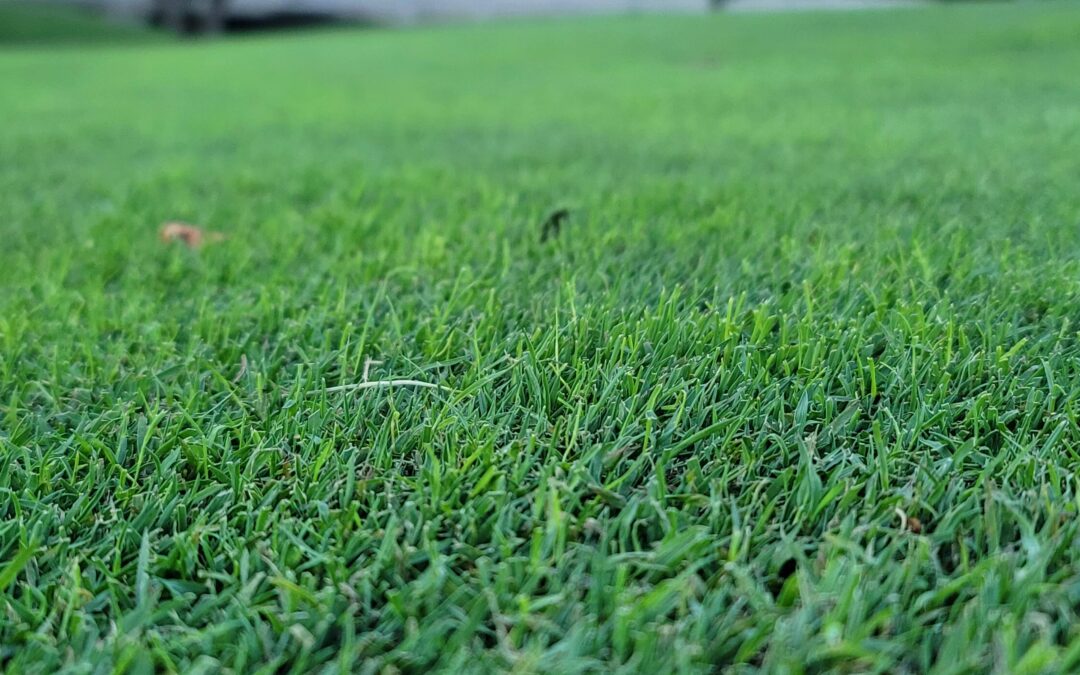Bacterial etiolation or “Mad-Tiller” disease is a very frustrating growth disorder that has perplexed many turfgrass managers and researchers. While the Kerns and Vargas labs have independently shown the rapid leaf growth rate is most likely the result of bacterial infection, many superintendents and field managers associate the issue with PGR selection. Recently, I published a series of Twitter|X posts around my observations and research with this maddening disease.
From My Twitter | X Account
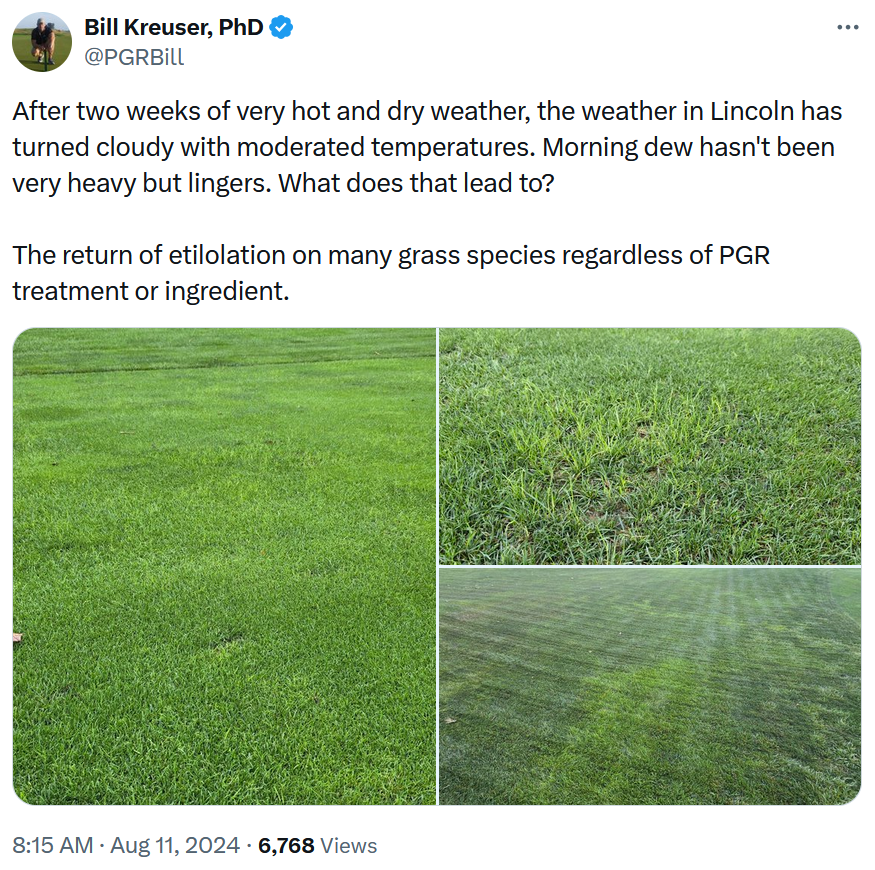
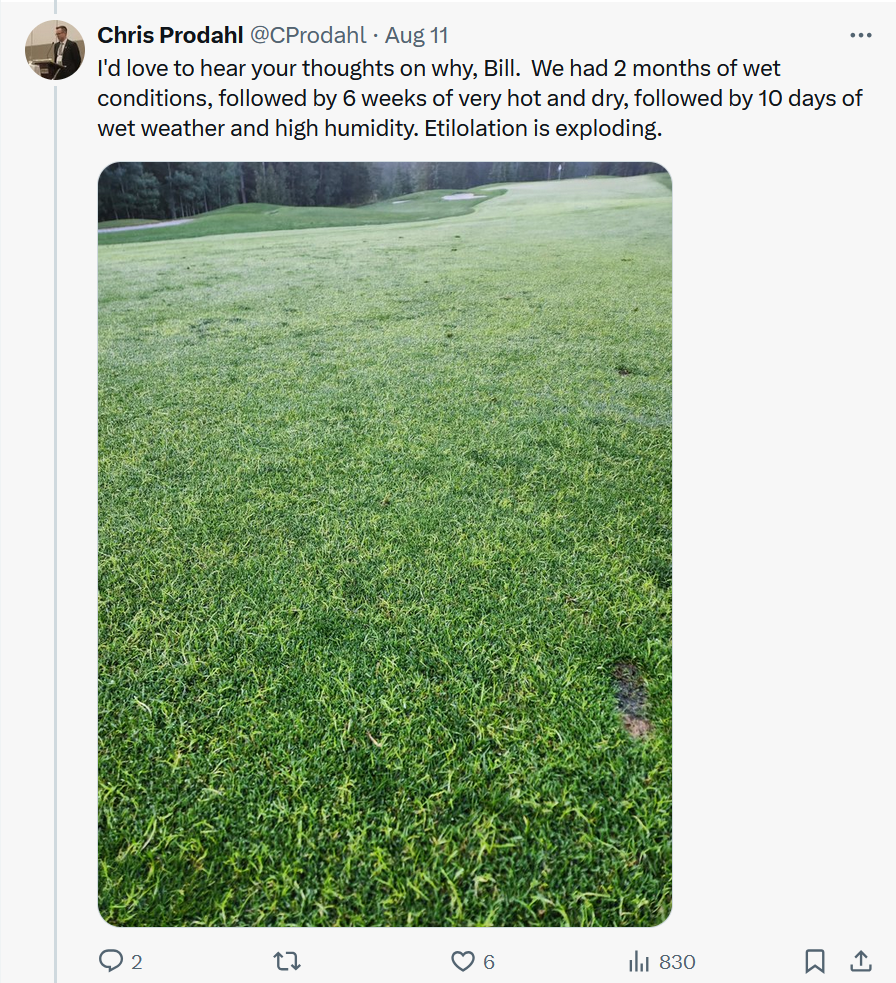
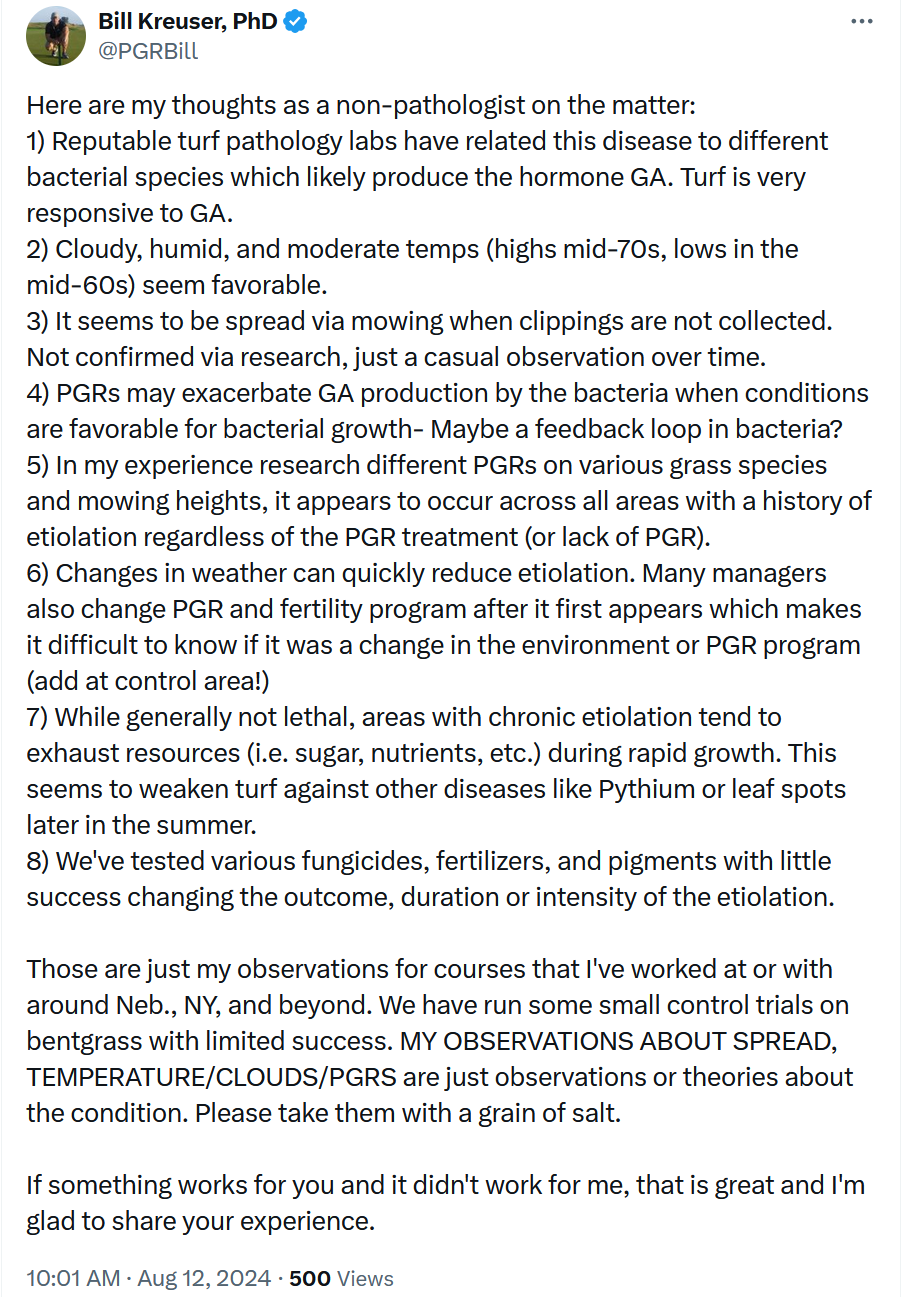
One Week Later…
The clouds cleared, the high temperatures soared, and the humidity dropped. All visual symptoms of bacterial etiolation disappeared. Many local superintendents changed their PGR program a few days prior to the change in weather conditions. This made it difficult to determine which factor reduced the disease. Was it the return of the sun? The hot high temperatures? Maybe it was the PGR rotation?
Bacteria or Nutrient Deficiency
There are other causes of leaf yellowing that can look like bacterial etiolation. A prominent one is nutrient deficiency from micronutrients like iron and manganese.
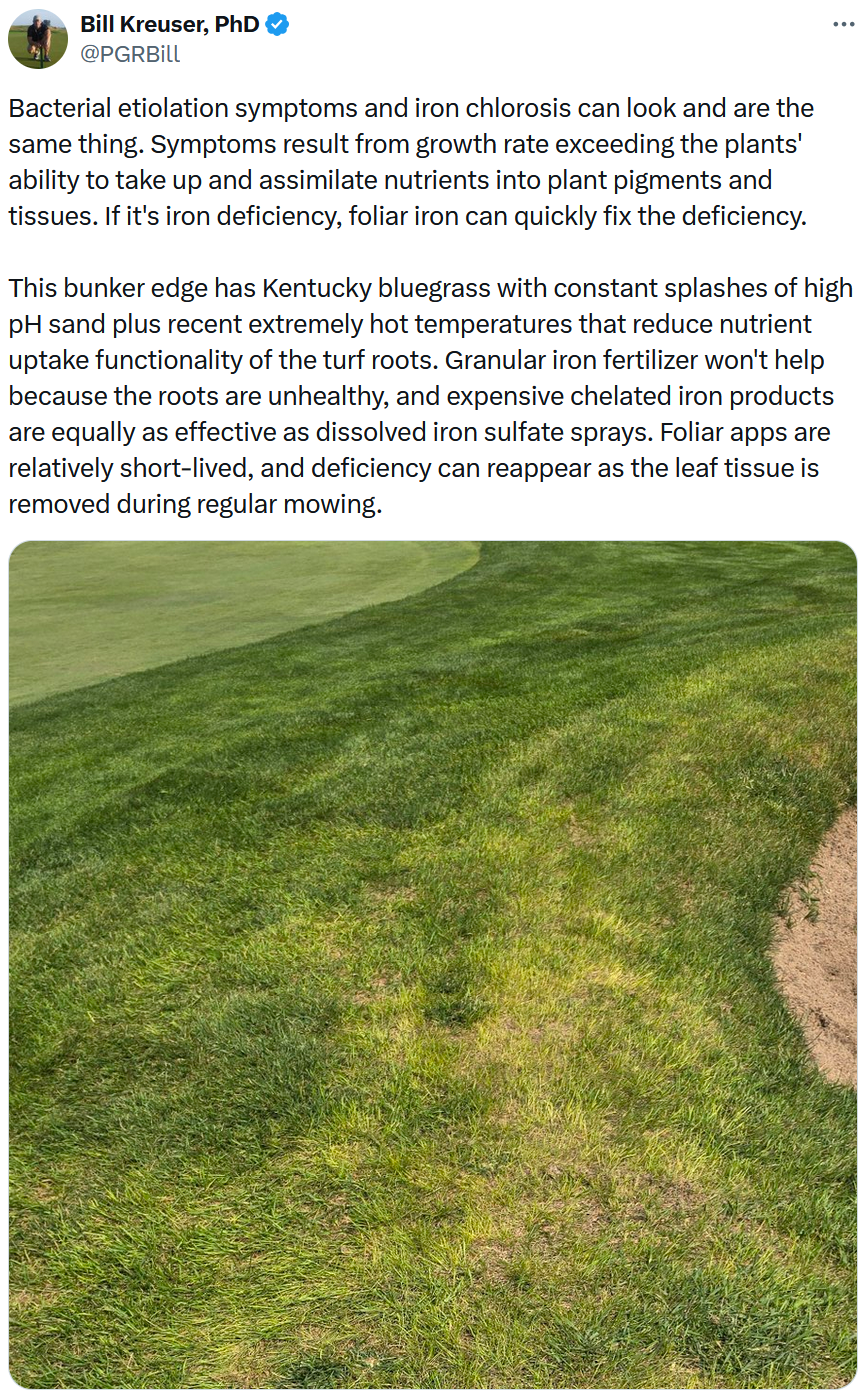
Conclusions?
Bacterial etiolation continues to be a problem for turf managers and a head-scratcher for researchers. The weather seems to have a much bigger impact on the prevalence than PGRs, but it is difficult to completely disregard the affect of the PGR. I look forward to crowdsourcing research across the country in 2025. GreenKeeper App users will even be able to report outbreaks so we can understand what factors led the the development of the perennial pest.

